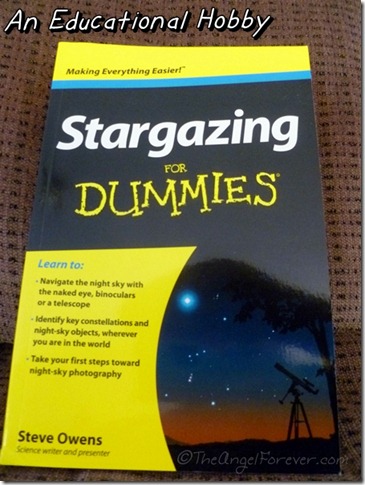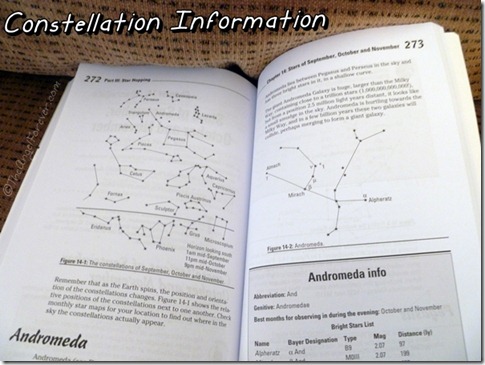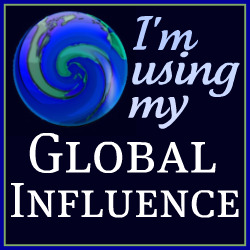Disclosure: I wrote this post as an Ambassador for Dummies books through a Global Influence campaign. I received a copy of this book for review purposes, but as a fan of Dummies books, the opinions expressed are 100% my own and no other compensation was received.
To this day, I still remember the fist time I went to a planetarium. It was an amazing experience and changed the way that I viewed the night sky. Call me a geek, but I was fascinated with the constellations and the stories behind them. I was mesmerized with being able to see planets. Of course, I am going to date myself and note that a lot of this happened when Halley’s Comet came around in 1986. I even have a Girl Scout Badge thanks to this occasion. To date, I adore finding Orion in the winter night sky and searching for other constellations close to the great hunter.
Fast forward to being a parent. Now I have a fourth grader that adores all things related to science, but especially the stars, planets, and space. When I saw that there was a new Stargazing For Dummies (Affiliate link to Amazon) book by Steve Owens, I knew this was something our family had to investigate. This would be a book to help us to get a better understand for stargazing at different times of years and what tools we would need. Oh and as a bonus, TechyDad could read up on night-sky photography tips.
As with all For Dummies books, Stargazing for Dummies is broken into sections. There are four parts with 17 chapters that are filled with information to help people navigate the night sky, learn to use binoculars or telescopes, identify the 88 constellations and other celestial objects visible on Earth, and photograph the sky at night. Here is a breakdown of the book:
Part 1: What’s Up? Getting Familiar with the Night Sky – This section begins with a lot of educational items including information about the sky during the day and night, moon, seasons, and more. After this, there are tips on preparing for your own stargazing experience. There are a lot of trouble shooting tips included in this, especially about lights (which is a huge factor for us). The section rounds out with two chapters on using binoculars and telescopes for viewing the night sky. I have to say I am intrigued and wonder if NHL would adore his own pair of binoculars now to go stargazing.
Part 2: Joining the Dots: Learning Your Way Around the Night Sky – Once you are comfortable with viewing the night sky, Owens teaches us about fixed versus wandering stars. We learn how to identify things from planets to the International Space Station. Chapter 8 helps us to connect the star dots to see constellation pictures that are in the night sky. Owen explain how certain constellations like the Big Dipper and Orion can be used as signposts to guide you in locating others. There is also information that will help us to get an app with star maps that I know NHL will adore once we find a better viewing location.
Part 3: Star Hopping – This section highlights all 88 constellations that are visible on Earth. Owen helps to break them down into sections based on what season they can be viewed. There are also star maps within each of the chapters to assist newbies in their search. Tables are also given with each of the constellations that include when they are best viewed and information about the brightest stars within them. Star geeks will be in their glory with all of this detail.
Part 4: The Part of Tens – Two great lists round out this book. This first is a list of ten “targets” that new stargazers should be searching for. I think we may need to try this as a checklist for the boys as we try some more serious stargazing. The second list includes more items to look for under conditions that are more dark. The reality is that the city lights really do play a factor in a lot of what we will be able to see.
After reading sections of this book, I can not wait to dive into it more with my son. I think this book could really get him excited about a new hobby that all of us can explore together. I am sure we will head to planetariums and also see what stargazing events are coming up locally at the many colleges in our area.
If you are interested in seeing some of the cheat sheets from the book, you can view them on the Stargazing for Dummies page.
Do you like to go stargazing? I would love to hear what tips and tricks you have found that work, especially if you are going out with younger children.
Additional Disclosures: An Amazon Affiliate link is included in this post for the Dummies book mentioned. I will receive a percentage of money for the sale should you opt to purchase it through that link. The Field of Stars photo above is from NASA and was taken by the Hubble Space Telescope.









